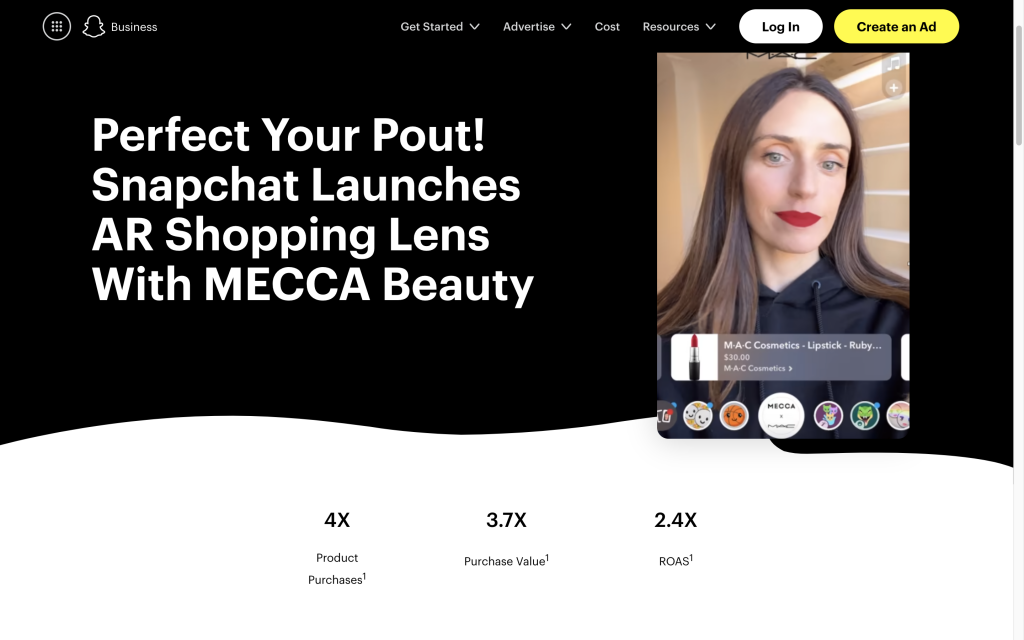Why Leverage AR in Marketing Communication: 4 Brand Cases
Augmented reality (AR) seems to be everywhere now. Retail brands allow customers to virtually try on new models of clothing and shoes. Game developers invite players to find hidden virtual treasures in reality with the help of game applications and smartphone cameras. Drivers have the option of seeing navigation details right on their windshields. And architects visit new buildings before construction even begins.
In 2023, the global market for technologies related to AR is estimated at $60 billion and is expected to double by the end of next year. In other words, we are going to have even more AR in our lives in the future, and the sooner your brand starts using it to improve product quality or customer experience, the more chances it has to surpass competitors.
In this article, we’ll consider various marketing-focused AR cases and explain how you can make your own AR-based projects cheaper using stock files.

What is augmented reality (AR)?
Let’s start with the basics and define key differences between virtual reality (VR) and augmented reality (AR). VR is about creating an isolated digital universe from scratch, which you can enter with the help of VR glasses or a headset, as well as other devices that affect human body sensors. One can also enter a virtual space using a computer or smartphone, but in this case, full immersion is impossible.
In turn, AR is not self-standing. From an engineering perspective, it is an additional 2D or 3D layer tied to real-world objects with GPS, gyroscope, or programs with enabled object recognition. From a design perspective, AR contains virtual objects, but unlike VR, it gives us new information that is strongly related to real objects in front of us.
AR projects require significantly smaller budgets than those focused on VR environments, and are also way more accessible to users; almost every smartphone with a camera can be a portal to AR (just think of the AR masks and lenses on Instagram and Snapchat). In addition, visuals you will show users in the virtual overlay can be taken from the Depositphotos library, where moody sound effects are also available. This approach will save your budget even more.

Integrating augmented reality to your communication: 4 brand cases
1. IKEA products visualization in clients’ homes
Placement: IKEA Place (mobile app for iOS and Android)
Perhaps the most famous AR product in the retail sector is IKEA Place. The app lets you experiment with the interior of your home or office, and decide which items from the IKEA catalog are worth purchasing. This application has already become the gold standard of AR furnishing applications, just as affordable, convenient, and stylish IKEA products have become a part of modern housing culture.
IKEA Place contains thousands of 3D objects. To enjoy the app features, you need to download IKEA Place to your device, select a piece of furniture or home decor, activate your camera, and point it wherever you see fit. The app also allows you to work on an interior design together with your family members or partner.
2. MECCA x MAC Cosmetics virtual lipstick test & purchase
Placement: Snapchat
Developing a stand-alone AR app requires time and a significant budget, but it’s not the only way to integrate AR into your marketing strategy. Social media, including Snapchat, Instagram, and TikTok, also allow brands to boost their customer experience.
Australian beauty retailer MECCA recently invited its followers to test some MAC Cosmetics products using an AR filter on Snapchat. Snapchatters could choose their lipstick color by switching between MECCA AR filters and instantly order a product they liked via social media.
Using filters as a tool for testing products virtually has an extra benefit for your brand. First, you can boost sales without investing in a website or physical store. Second, social media users end up sharing images of your products and tags, which helps increase brand awareness.

3. Augmented reality clothing for Social Media Week (Depositphotos x VistaCreate x Huntrezz)
Placement: Instagram
In 2021, Depositphotos hosted a Social Media Week conference focused on marketing and creativity where participants could obtain clothing made by US digital artist Huntrezz Janos, together with FFFFace, FINCH, and Mubert. The custom-made hoodie’s design became animated when an Instagram-activated camera was pointed at it.
The “live” AR image didn’t just have decorative purposes. Primarily, it was part of SMW’s audiovisual manifesto calling for everyone to “unleash their creativity”. The manifesto also contained an AI-generated audio track.
4. The Weeknd’s AR concert
Placement: TikTok
Canadian artist The Weeknd is a virtual concert pioneer. His show held in collaboration with WAVE (an XR concert provider) was targeted at his TikTok audience. On TikTok, users could listen to songs from The Weeknd’s new album and influence the scenography and overall vibe. For example, they could vote for the design of AR scenes, as well as share comments that were displayed as virtual objects.
The presentation of the “After Hours” album in AR format started a debate about whether virtual concerts should be similar to traditional ones, or whether organizers should continue to experiment with providing audiences with unique XR experiences. An important aspect of organizing a marketing campaign in AR format is that it’s a good alternative to offline events because an infinite number of guests can participate.
Final thoughts
Augmented reality is a promising area if you are a marketer or customer experience manager. However, you need to consider that AR-based projects are often consuming in terms of your team’s resources and budget. Their results are hard to predict since there are only a few similar cases with published results. That’s why we advise you to plan your campaigns carefully and be prepared for a variety of outcomes.
It’s a good idea to start your brainstorming by asking how you can better connect to your audience through augmented reality. Then, use AR tools within social media to optimize your creative campaign budget. And lastly, always pay attention to the analytics of your AR campaigns to avoid mistakes in the future. This way, you’ll also discover your strengths.
Find more ideas here
Unlocking the Potential of Account-Based Marketing: Key Strategies
How Do You Make Sense of Your Data? A Guide to Data-Driven Marketing
Cause Marketing: Meaning, Benefits, and Top Strategies
Trigger Marketing: Definitions, Benefits, and Key Strategies






